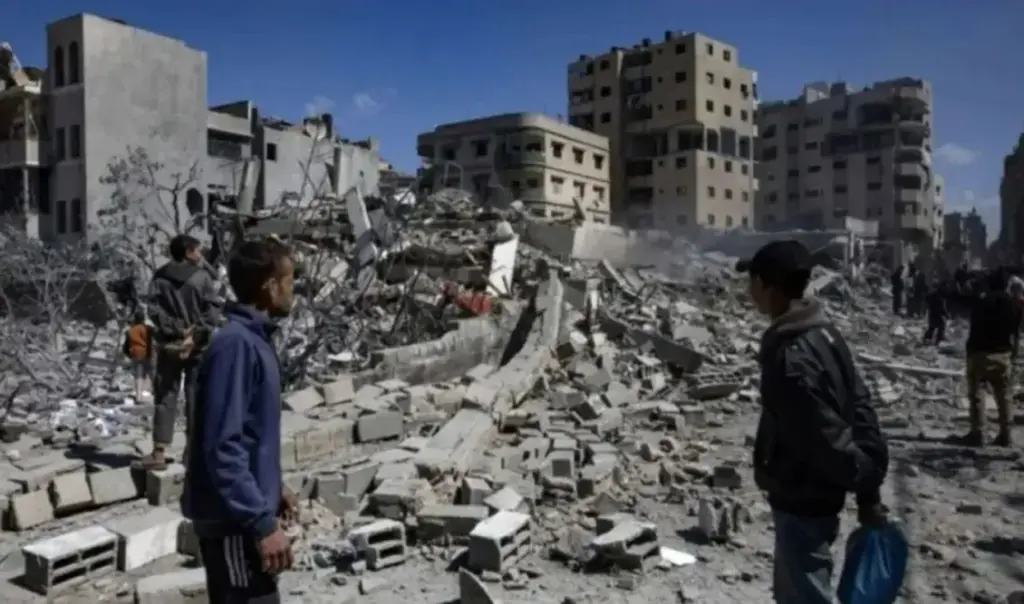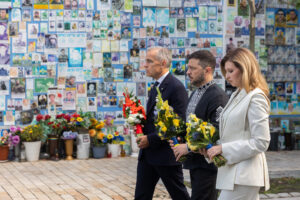“The military operation has begun, the initial stages of the attack on Gaza have been completed, the strikes against the Hamas terrorist organization will escalate,” were the first words of the Israeli army spokesperson on the morning of Thursday, August 21, marking the official opening of a new round of strikes in Gaza as part of the elimination of the extremist Islamist organization in the region and the advancement of the Israeli plan to occupy the Palestinian enclave.
Israel: When did whispers become shouts and when did the IDF’s second plan begin implementation?
The Gaza occupation plan, which is part of a comprehensive operation to rebuild the region and completely remove Hamas forces, was approved by the Israeli government several weeks ago.
Benjamin Netanyahu’s staff, despite disagreements within the Army about the occupation plan due to fears of hostage elimination, decided that a new ground operation would further restrict Hamas. After all, Israel’s goal, as the government declares, is the complete disarmament of Hamas forces, with their consequent removal from Gaza. In his latest statements, Israeli Defense Minister Israel Katz warned that Gaza will be destroyed if Hamas does not agree to the terms of disarmament and hostage release, sending a final message before the major intervention. In recent days, however, Hamas’s initially positive response to the ceasefire proposal received from Egyptian and Qatari mediators was interpreted as a bluff, which provides for a 60-day cessation and hostage release in two stages.
The Islamist organization, however, despite not rejecting the American plan by Trump’s Middle East representative Steve Witkoff, according to which 50 hostages would be released in two stages, did not show signs of taking steps toward peace.
Evacuation warnings
Developing the Hamas elimination plan, Israel called up about 60,000 reservists to begin the first stages of the new ground operation, with IDF forces now controlling Gaza’s outskirts while characterizing the terrorist organization as clearly wounded and with significant losses.
In recent days, the US has not expressed objections to the new Israeli occupation plan, however European countries highlight the two-state solution as the most appropriate way to establish normalcy in Gaza territories. Israel, for its part, prefers a new administration under its supervision and therefore removed from terrorism factors.
However, how such a system would function remains enigmatic, with the health and humanitarian crisis in Gaza automatically signaling SOS for a change in the terrorism regime. Israel is issuing evacuation warnings to the civilian population while allowing humanitarian aid passage to Gaza.
It’s worth noting that a few days ago the E1 settlement plan was approved, focusing on eastern Jerusalem and including about 3,500 apartments for expanding the existing Ma’ale Adumim settlement. This is the plan that had remained frozen since 2012 and is intended to bisect the West Bank.
The E1 area has been designated by Israelis as a development field for more than two decades, but the plans had remained on paper and were halted due to US pressure during previous governments. Today, about 700,000 Israeli settlers live in the West Bank and East Jerusalem. There is also a growing movement of Israelis who wish to build settlements in Gaza. In recent hours, Netanyahu is sending messages about ending the war by neutralizing terrorists, while Hamas accuses Israeli forces of violence.
Meanwhile, international media report Palestinians fleeing from Gaza areas where military operations are being conducted. However, on Wednesday morning, at least 18 Hamas terrorists attempted to infiltrate an IDF camp in the Khan Younis area, in the southern Gaza Strip. Three Israeli soldiers were wounded in the attack, one seriously. The Israeli Army estimates that the armed group sought to kidnap soldiers, according to Times of Israel reports. At the same time, an Israeli Army spokesperson stated that troops are already operating in the Zeitoun and Jabaliya areas to prepare the ground for the attack approved by Defense Minister Israel Katz. Israel’s Prime Minister stated he is fighting his own battle against time to capture areas he described as “the last strongholds of terrorism” in Gaza.
Israeli Army spokesperson Brigadier Efi Defrin stated after clashes with Hamas in Khan Younis: “We will intensify the attack against Hamas in Gaza City, a stronghold of administrative and military terror of the terrorist organization.” Defrin said soldiers have already begun encircling the city’s outskirts and Hamas is now a “beaten and wounded” guerrilla force.
Published in Parapolitika




